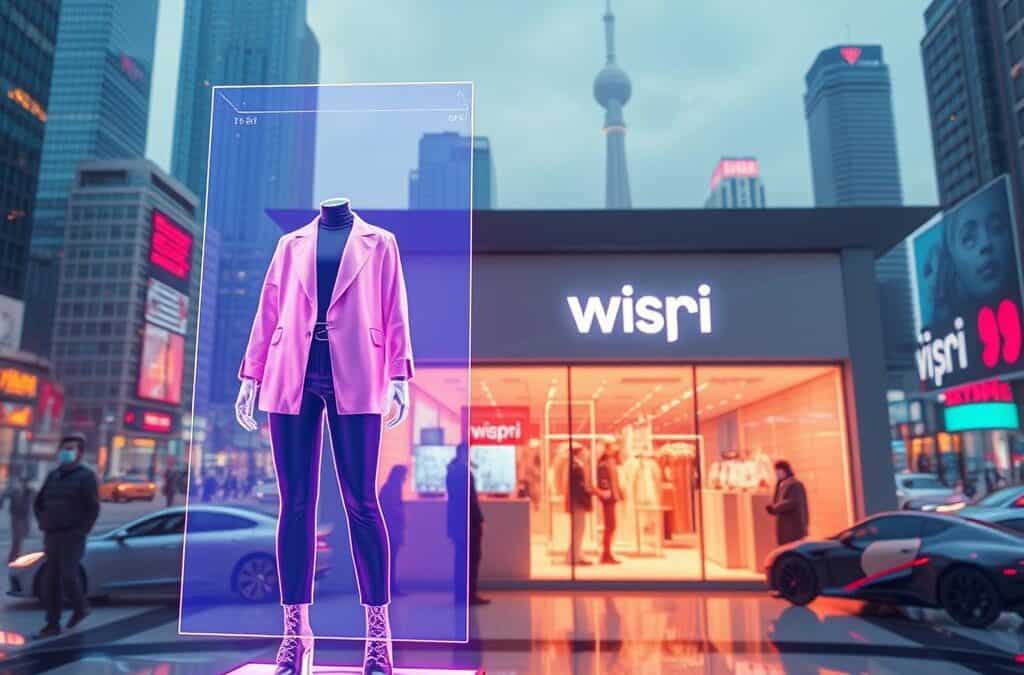The augmented reality market was valued at $40.12 billion by 2022 and is projected to reach $1.19 trillion by 2032, indicating a significant shift in how businesses operate and consumers interact with products.
This rapid growth is transforming the retail landscape, with augmented reality technology allowing customers to visualize products in their own space or on themselves before making a purchase, thereby bridging the gap between physical and digital shopping experiences.
As major retailers invest heavily in this technology, Australian consumers are increasingly encountering these immersive tools, raising the question: is augmented reality shopping a fleeting gimmick or a genuine game-changer?
Key Takeaways
- Augmented reality is revolutionising the retail industry by providing immersive shopping experiences.
- The technology allows customers to visualise products in their own space before making a purchase.
- Major retailers are investing heavily in augmented reality technology.
- Combining AR shopping with price tracking tools can maximise value for consumers.
- The future of retail is likely to be shaped by advancements in augmented reality.
What Is AR Shopping and Why Is It Gaining Momentum?
Augmented reality shopping is revolutionizing the retail landscape in Australia. As consumers increasingly turn to online shopping, AR technology is bridging the gap between the digital and physical retail experiences. This shift is driven by the growing demand for more immersive and interactive shopping experiences.
Definition and Current Market Value
Augmented reality shopping refers to the integration of digital information and virtual objects into the real-world shopping environment. This allows customers to visualize products in context before making a purchase. The global AR market is projected to expand significantly, from $40.12 billion in 2022 to $1.19 trillion by 2032, indicating a substantial growth trajectory.
The current market value of AR shopping is substantial, with various industries benefiting from this technology. Retailers are leveraging AR to enhance customer engagement and reduce return rates. The technology is being applied across various sectors, including fashion, home decor, and cosmetics.
| Industry | AR Application | Benefits |
|---|---|---|
| Fashion | Virtual try-on | Reduced returns, increased customer satisfaction |
| Home Decor | Furniture visualization | Enhanced customer experience, informed purchasing decisions |
| Cosmetics | Virtual makeup try-on | Increased customer engagement, reduced returns |
The Growing Adoption Among Australian Retailers
Australian retailers are increasingly adopting AR technology to enhance the shopping experience. By implementing AR features in their mobile apps and websites, retailers can stay competitive and meet evolving consumer expectations. Major retailers are following global trends, recognizing the potential of AR to bridge the gap between online convenience and in-store product interaction.
The adoption of AR shopping tools is on the rise, with applications ranging from virtual try-on for clothing and cosmetics to home decor visualization apps. This technology addresses key pain points in the online shopping experience, particularly the inability to physically interact with products before purchase.
The Evolution of Online Shopping Experience
The evolution of online shopping has been marked by significant milestones, from basic product images to interactive 3D models. This transformation has been driven by advancements in technology, changing consumer behaviors, and the need for more engaging shopping experiences.
From 2D Images to Interactive 3D Models
The shift from 2D images to interactive 3D models has revolutionized the online shopping experience. Traditionally, online shopping experiences were limited by static product images, leaving customers uncertain about product dimensions, appearance, and suitability. The introduction of 3D product visualization marked a significant step forward, allowing customers to rotate and examine products from multiple angles. Now, with Augmented Reality (AR) technology, customers can interact with virtual products in their real-world environment, making the shopping experience more enjoyable and memorable.
- Interactive 3D models enable customers to better understand product features, size, and fit.
- AR technology allows customers to place virtual products in their real-world environment.
- This evolution addresses one of the most significant barriers to online shopping: the inability to physically interact with products before purchase.
Bridging the Gap Between Physical and Digital Retail
AR technology has effectively bridged the gap between physical and digital retail, providing a seamless shopping experience. Australian retailers across various sectors are embracing this technological evolution to provide more engaging and informative shopping experiences. By using AR, consumers can better understand product features, size, and fit, reducing the likelihood of product returns and increasing customer satisfaction. The platform tracks prices from major Australian retailers, including Amazon Australia, eBay, JB Hi-Fi, Harvey Norman, Officeworks, and Bunnings, making it easier for consumers to make informed purchasing decisions.
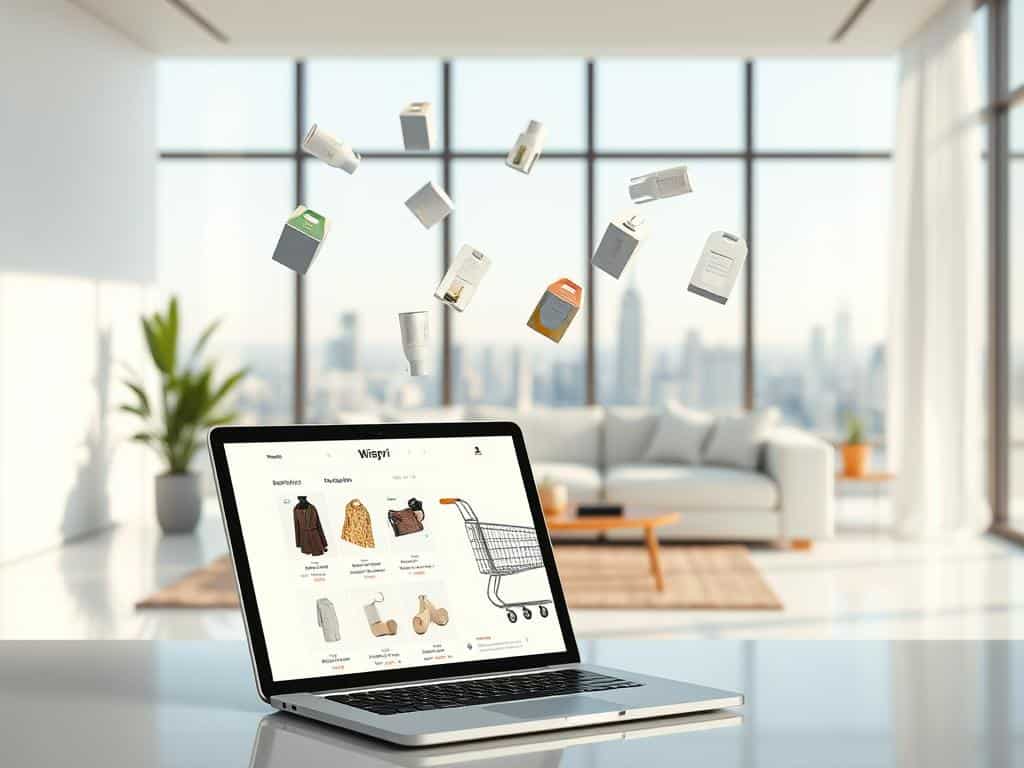
10 Ways AR Shopping Is Transforming Retail
Retailers are leveraging AR technology to create immersive shopping experiences that are transforming the industry. By integrating augmented reality into their online platforms, retailers can offer customers a more interactive and engaging way to shop.
Virtual Try-Before-You-Buy Experiences
One of the most significant advantages of AR shopping is the ability to offer virtual try-before-you-buy experiences. This technology allows customers to see how products look on them or in their environment before making a purchase, reducing the likelihood of returns and increasing customer satisfaction.
Reduced Return Rates and Cost Savings
AR shopping technology has been shown to significantly reduce return rates. By allowing customers to virtually try on products, retailers can minimize the number of returns, resulting in cost savings for both the retailer and the customer. According to data, some retailers have reported up to 40% fewer returns when customers use AR tools.
Enhanced Customer Engagement and Loyalty
AR experiences not only enhance customer engagement but also foster loyalty. By increasing the time spent on product pages and boosting conversion rates, AR technology helps create a more satisfying customer experience. Shopify reports that conversion rates can increase by as much as 250% when AR is featured on product pages.
Personalised Shopping Experiences
AR shopping enables personalized shopping experiences by allowing customers to customize products to their specific preferences and needs. This tailored approach to shopping creates a more satisfying journey for customers, making them more likely to return to the retailer.
Data-Driven Insights for Retailers
Retailers gain valuable insights from AR interactions, learning which products customers virtually try on most frequently and how they interact with different items. This data helps retailers make informed decisions about product offerings and marketing strategies, ultimately enhancing the overall shopping experience.
Other ways AR shopping is transforming retail include reducing decision anxiety, creating memorable brand experiences, offering environmental benefits by reducing returns, overcoming space limitations in physical retail, and bridging online and offline shopping experiences. By adopting AR technology, retailers can stay ahead of the curve and meet the evolving expectations of modern Australian consumers.
Popular AR Shopping Applications in Australia
The rise of AR shopping applications in Australia is revolutionizing the retail landscape. With various innovative apps available, consumers can now enjoy a more immersive and interactive shopping experience.
Furniture and Home Décor Visualisation
Furniture and home décor visualization has become one of the most popular AR shopping applications in Australia. Retailers like IKEA are leading the way with their IKEA Kreativ app, allowing customers to create 3D replicas of their rooms. Using LiDAR technology integrated into iPhones, customers can scan their rooms and virtually place furniture items to assess size, style, and fit before making purchasing decisions.
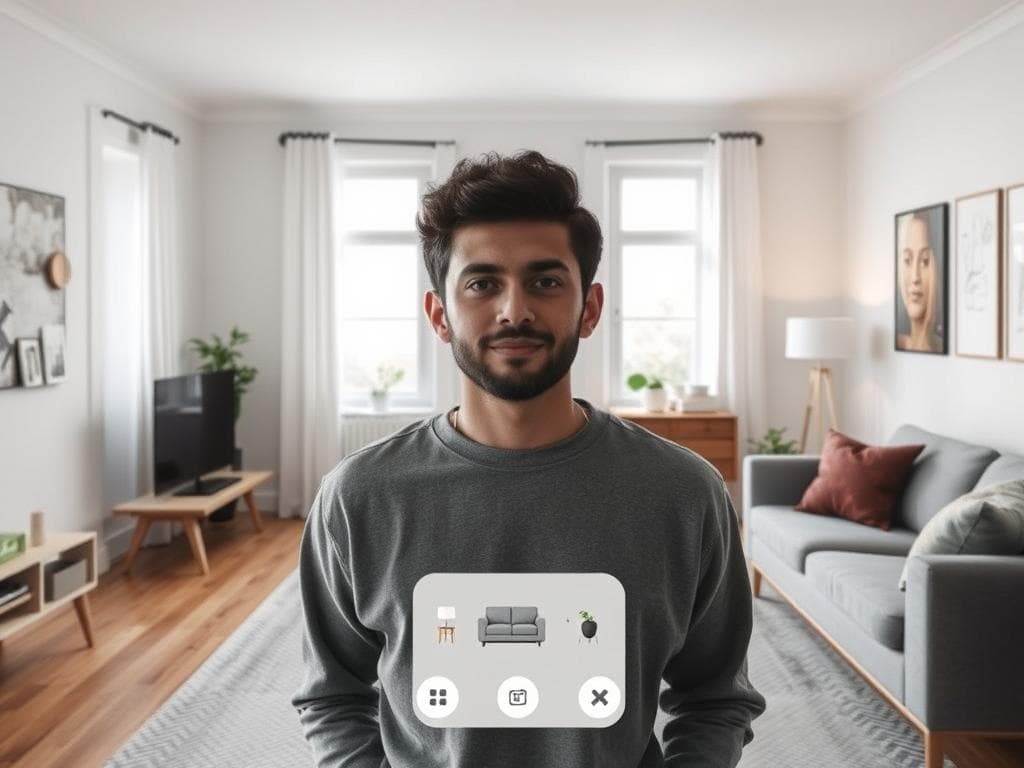
Virtual Fashion and Beauty Try-Ons
Virtual fashion and beauty try-ons have gained significant traction among Australian shoppers. Major retailers and brands are offering apps that allow customers to see how clothing, accessories, and makeup would look on them without physical trials. Beauty brands operating in Australia have embraced AR technology to let customers virtually try different makeup shades, hairstyles, and skincare products, significantly enhancing the online shopping experience.

Automotive AR Experiences
The automotive industry in Australia has implemented innovative AR experiences that allow potential buyers to visualize different car models, colors, and features in their own driveways or garages. Toyota Australia has developed AR applications that enable customers to recognize their vehicle through the camera system and add computer-generated accessories without needing markers or images on the car.
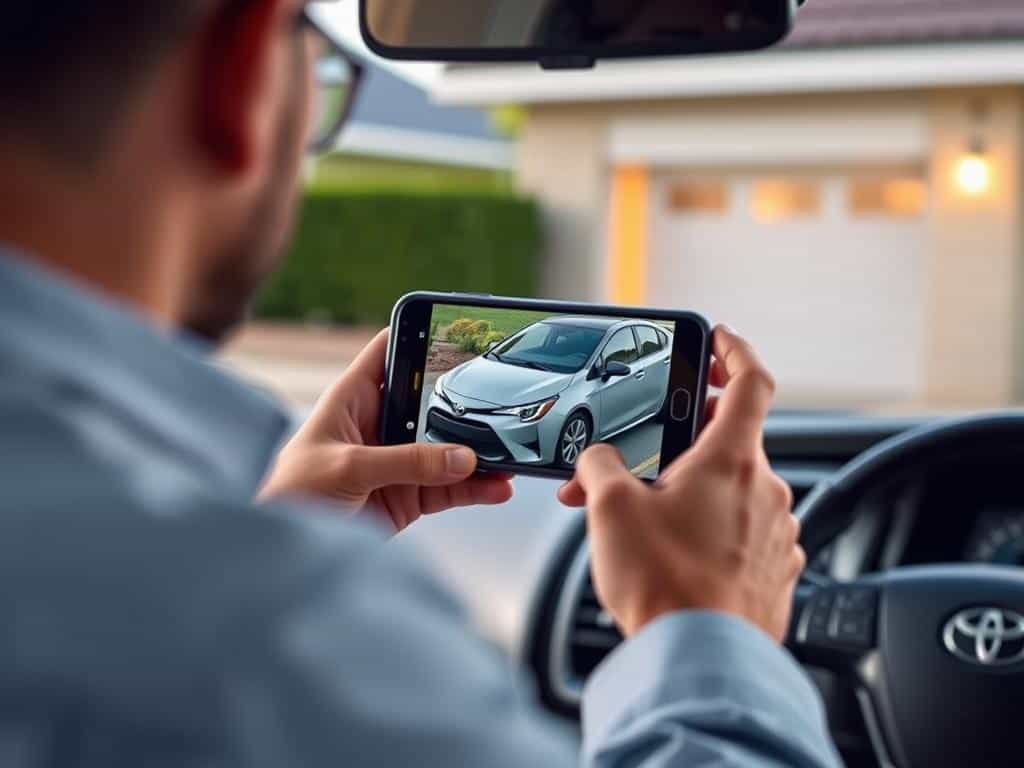
These AR shopping applications are particularly valuable for Australian consumers who live in remote areas with limited access to physical retail locations, democratizing the shopping experience across the country. With the service being free to use and premium features available through Wispri PRO subscription, it’s perfect for budget-conscious Australian consumers looking to time their purchases for maximum savings.
Major Brands Leading the AR Shopping Revolution
Major brands are at the forefront of the AR shopping revolution, transforming the way Australians shop online. By integrating Augmented Reality into their e-commerce platforms, these industry leaders are setting new standards for customer experiences.
IKEA’s Kreativ: Transforming Furniture Shopping
IKEA has been a pioneer in leveraging AR technology with its Kreativ app, allowing customers to create a complete 3D replica of their room using LiDAR technology on their iPhones. This innovative tool enables users to remove their current furniture virtually and experiment with new pieces, providing a precise visual representation of how products will look and fit in their actual living spaces. The IKEA Kreativ app represents one of the most sophisticated AR furniture shopping experiences available to Australian customers.
Amazon’s Virtual Try-On for Shoes
Amazon has also incorporated AR technology to enhance the online shopping experience. The retail giant’s Virtual Try-On for Shoes feature allows customers to visualize how a pair of shoes will look on their feet from multiple angles using their smartphone cameras. This revolutionary feature lets shoppers quickly swap between different shoe colors and styles, and even capture photos of their virtual try-on sessions to share on social media or with friends for opinions.
Australian Retailers Embracing AR Technology
Major Australian retailers, including Temple & Webster, Fantastic Furniture, and Harvey Norman, have developed their own AR shopping experiences to stay competitive. Additionally, Australian beauty brands like Mecca and Adore Beauty have implemented virtual try-on technologies for makeup and skincare products, recognizing the value of AR in reducing return rates and enhancing customer satisfaction. These leading brands are driving the adoption of AR technology across the retail sector.
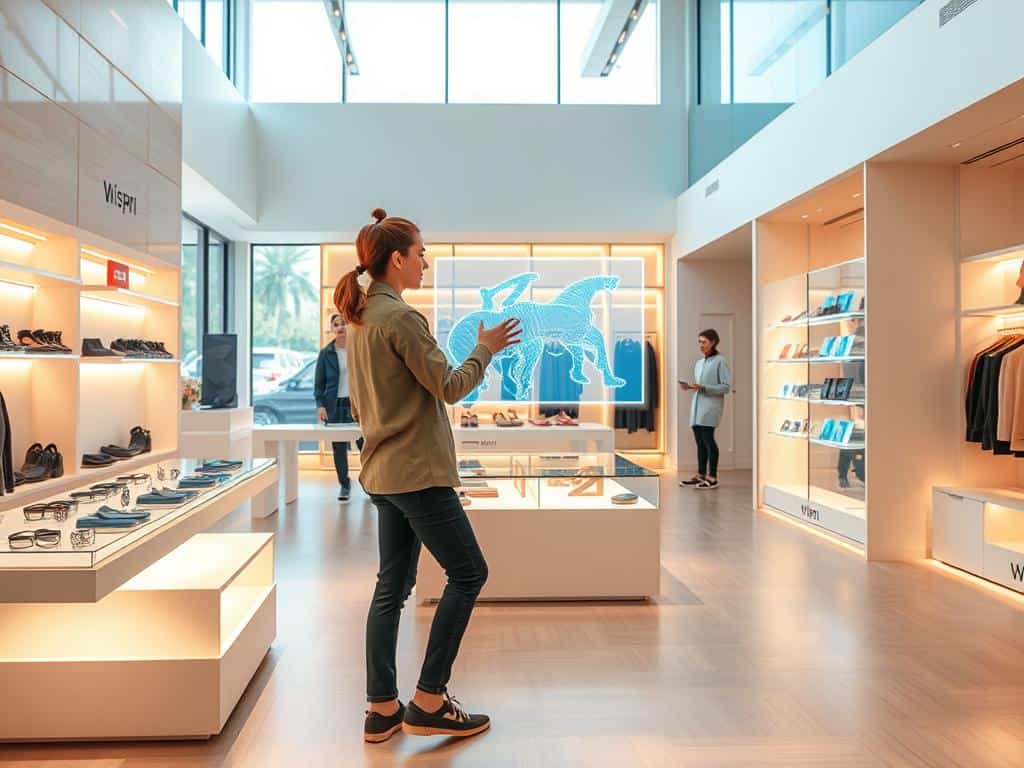
How AR Shopping Enhances the Customer Journey
AR shopping is transforming the customer journey by providing immersive and interactive experiences. This technology is not just a gimmick; it’s a game-changer that enhances every stage of the customer’s interaction with a product or service.
Pre-Purchase Decision Making
AR shopping significantly enhances pre-purchase decision making by allowing customers to visualize products in their intended environment. This reduces uncertainty and increases purchase confidence. During the research phase, AR tools provide customers with more comprehensive product information than traditional 2D images or videos.
During-Purchase Engagement
The interactive nature of AR shopping creates higher levels of engagement, with customers spending more time exploring product features and options. AR shopping experiences make the purchasing process more enjoyable and memorable.
Post-Purchase Support and Service
In the post-purchase phase, AR technology offers innovative support solutions, such as interactive assembly instructions. AR can help customers troubleshoot product issues, reducing the need for customer service calls or returns. This enhances the overall customer experience.
By enhancing pre-purchase decision making, during-purchase engagement, and post-purchase support, AR shopping creates touchpoints that strengthen the relationship between brands and customers. This fosters loyalty and encourages repeat purchase decisions, ultimately benefiting both the customer and the retailer.
Gamification and Social Elements of AR Shopping
The integration of gamification and social elements is revolutionizing AR shopping experiences in Australia. By making shopping more interactive and engaging, retailers are enhancing customer loyalty and encouraging repeat business.
Creating Shareable Shopping Experiences
Social media platforms like Instagram and Snapchat have pioneered AR shopping features through filters and effects, allowing users to virtually try products and share the results with their networks. This shareable nature of AR shopping experiences creates organic marketing opportunities, as users post their virtual try-ons or product visualizations across social media platforms.
For instance, Snapchat worked with nail polish brand OPI to create a try-on filter, allowing users to test different nail polish colors. This campaign not only boosted user engagement but also generated significant social media buzz.
Building Community Through AR Interactions
AR shopping apps with community features enable users to share their virtual room designs or outfit combinations, creating peer-to-peer inspiration and validation. Australian retailers are developing AR experiences specifically designed to be screenshot-worthy or shareable, recognizing the marketing value of user-generated content.
Gaming mechanics like challenges, rewards, and achievements are being integrated into AR shopping experiences to increase engagement and repeat usage. The success of apps like YouCam Makeup, with over 160 million downloads, demonstrates the power of combining AR shopping with social media functionality.
| AR Shopping Feature | Benefit | Example |
|---|---|---|
| Virtual Try-On | Reduced Return Rates | OPI’s nail polish try-on filter on Snapchat |
| Shareable Experiences | Increased Social Media Engagement | YouCam Makeup’s social sharing features |
| Gaming Mechanics | Enhanced User Engagement | Tesco’s AR experiences in the Tesco Discover app |
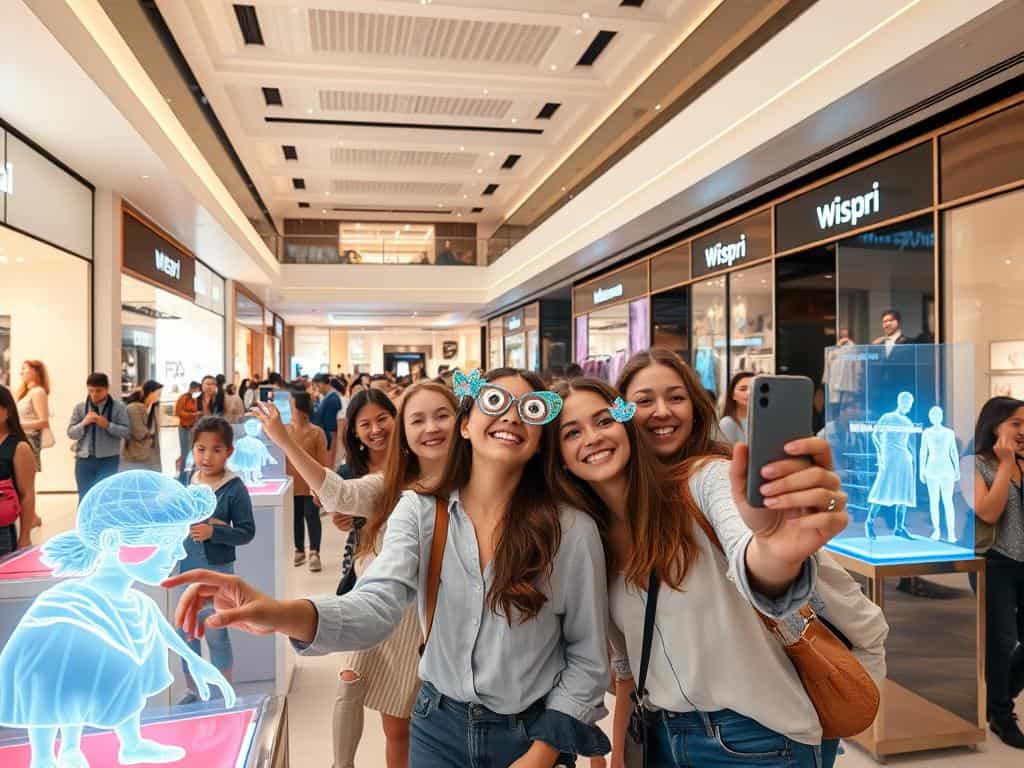
How Wispri Complements AR Shopping for Australian Consumers
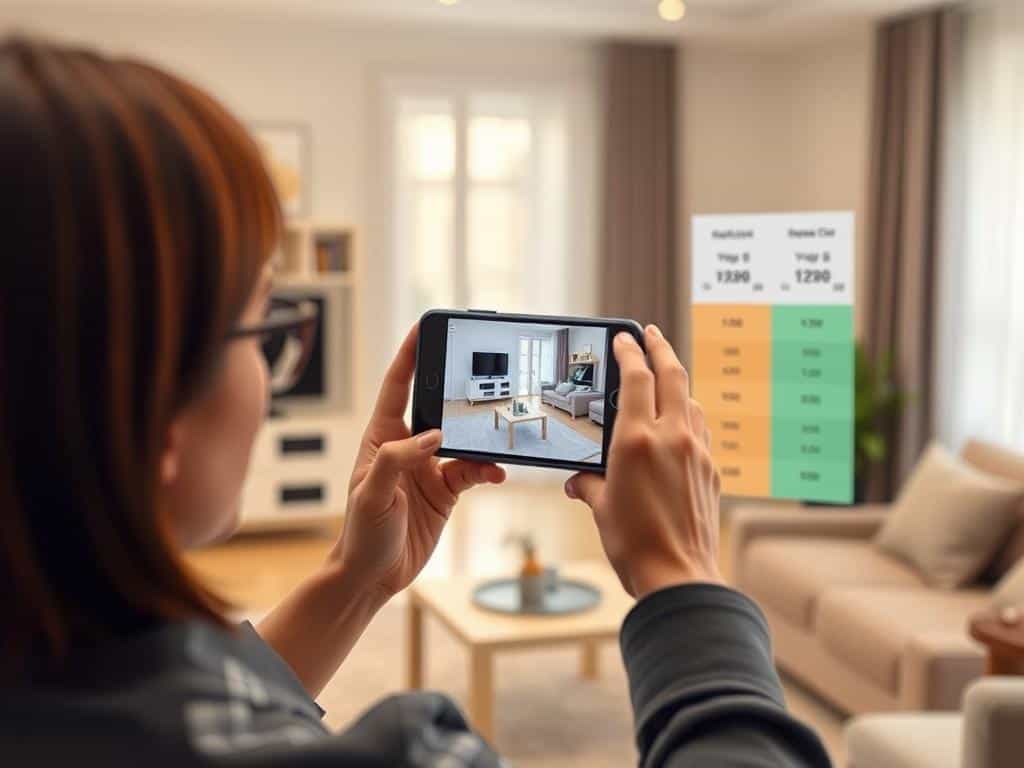
Wispri is revolutionizing the Australian shopping experience by combining AR technology with price intelligence. As consumers increasingly use Augmented Reality to visualize products in their own space, Wispri’s price tracking platform ensures they’re getting the best possible deal.
Combining Price Intelligence with AR Shopping Decisions
When Australian customers use AR shopping apps to visualize products, they can then use Wispri to monitor prices across multiple retailers, including major stores like Amazon Australia, eBay, and JB Hi-Fi. This combination creates a comprehensive shopping experience that addresses both product suitability and price optimization. Wispri’s AI-powered price monitoring system works seamlessly alongside AR shopping experiences, allowing customers to set price alerts for products they’ve virtually tried on or visualized in their space.
Maximising Savings on AR-Discovered Products
By integrating Wispri with AR shopping, Australian consumers can maximize their savings. After using AR to confirm a product’s suitability, customers can add the item to their Wispri dashboard to receive notifications when prices drop to their desired level. Wispri’s historical price data also helps shoppers avoid fake sales by showing genuine price reductions, adding another layer of intelligence to AR-enhanced shopping decisions. The free-to-use Wispri platform, with premium features available through Wispri PRO, makes it accessible to all Australian shoppers looking to maximize savings on products discovered through AR shopping experiences.
The powerful combination of AR shopping and Wispri’s price tracking represents the future of smart shopping in Australia, where consumers can make visually informed decisions while ensuring they’re getting the best possible price.
Challenges and Limitations of AR Shopping Technology
Despite its potential, AR shopping technology faces significant technical barriers and user experience issues that could hinder its widespread adoption. The complexity of creating seamless AR experiences is a major challenge, as it requires compatible devices with sufficient processing power and advanced camera capabilities.
Technical Barriers and User Experience Issues
Many Australian consumers, particularly those in rural areas or with older smartphones, may be unable to access AR shopping experiences due to hardware limitations. User experience issues persist, with challenges in accurately mapping 3D models to different body types or properly detecting surfaces in varied lighting conditions.
- Technical limitations in accurately representing product textures and materials
- Inconsistent experiences across different AR platforms
- Difficulty in managing expectations of where AR items can be placed
Privacy and Data Security Concerns
Privacy concerns are mounting as AR shopping applications collect extensive data about users’ homes, physical characteristics, and preferences. Data security risks increase as AR shopping platforms gather and store detailed information about customers’ living spaces and shopping habits.
| Concern | Description | Impact |
|---|---|---|
| Data Collection | AR apps collect detailed user data | Privacy risks |
| Data Storage | Secure storage of user data | Data security risks |
| User Consent | Informed consent for data use | Trust in AR technology |
The Future of AR Shopping: Beyond the Gimmick
The future of shopping is being rewritten by augmented reality, transforming the way Australians discover and purchase products. As AR technology becomes more sophisticated, we can expect deeper integration between physical retail spaces and digital experiences.
Key developments such as AR smart glasses and wearable technology will make AR shopping more intuitive. The future of retail will likely incorporate artificial intelligence for personalized recommendations, enhancing the shopping experience.
Australian brands investing in AR technology now will be better positioned to adapt to changing consumer expectations, maintaining a competitive edge in the retail industry.
FAQ
What is augmented reality shopping, and how does it work?
Augmented reality shopping is a technology that overlays digital information onto the real world, allowing customers to see products in their own space before making a purchase. This is typically done through a mobile app or website.
How does AR shopping benefit Australian retailers?
AR shopping benefits Australian retailers by enhancing customer engagement, reducing return rates, and providing valuable insights into customer behaviour. It also allows retailers to offer personalised experiences and stay competitive in a rapidly changing retail landscape.
Can I use AR shopping to try on makeup or clothes virtually?
Yes, many retailers, such as beauty and fashion brands, offer virtual try-on experiences using AR technology. This allows customers to see how products look on them without having to physically try them on.
Is AR shopping available on all devices?
AR shopping is available on most modern smartphones and tablets, but the quality of the experience may vary depending on the device’s specifications and camera capabilities.
How do I access AR shopping experiences?
You can access AR shopping experiences through a retailer’s mobile app or website. Some retailers may also offer AR experiences through social media platforms.
Are there any security concerns with using AR shopping?
As with any online shopping experience, there are potential security risks associated with AR shopping, such as data breaches or unauthorised access to personal information. However, most retailers take steps to protect customer data and ensure a secure shopping experience.
Can I use AR shopping to visualise furniture in my home?
Yes, many furniture retailers, such as IKEA, offer AR experiences that allow customers to see how furniture would look in their home before making a purchase.
How does AR shopping impact the customer journey?
AR shopping enhances the customer journey by providing a more immersive and interactive experience, allowing customers to make more informed purchasing decisions, and offering personalised support and service.

